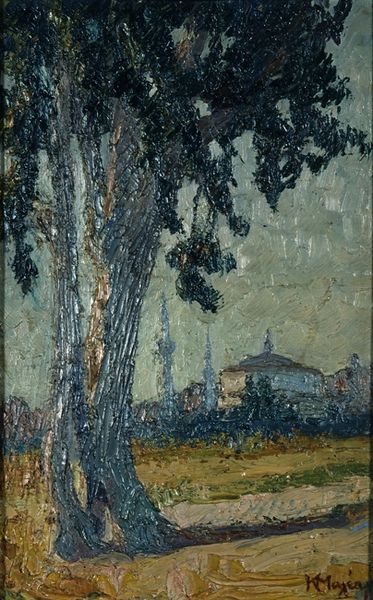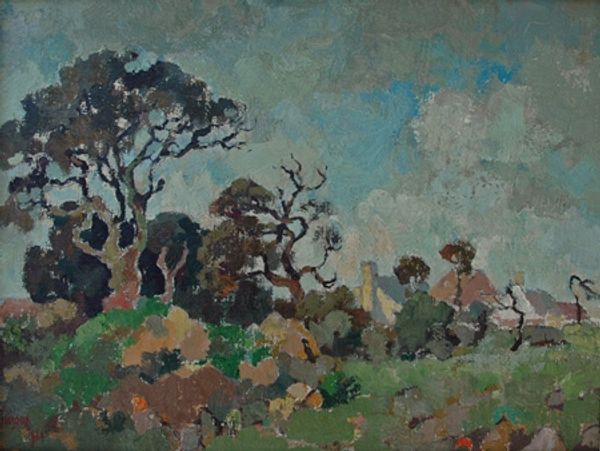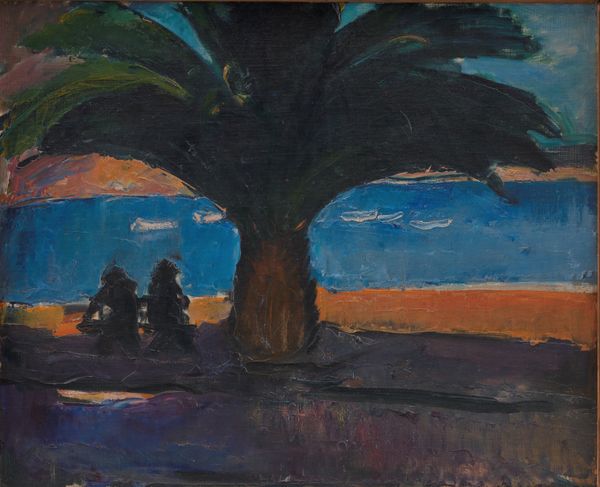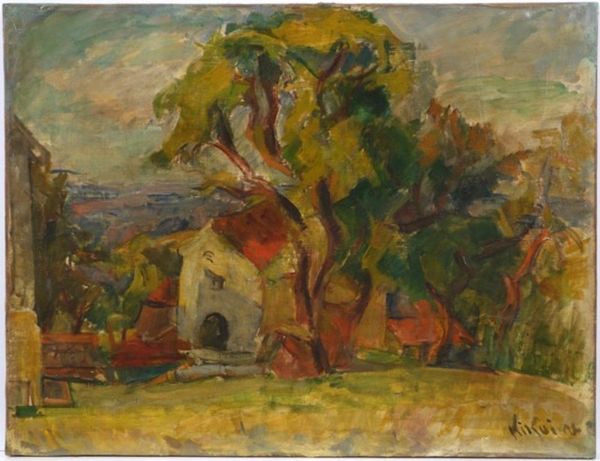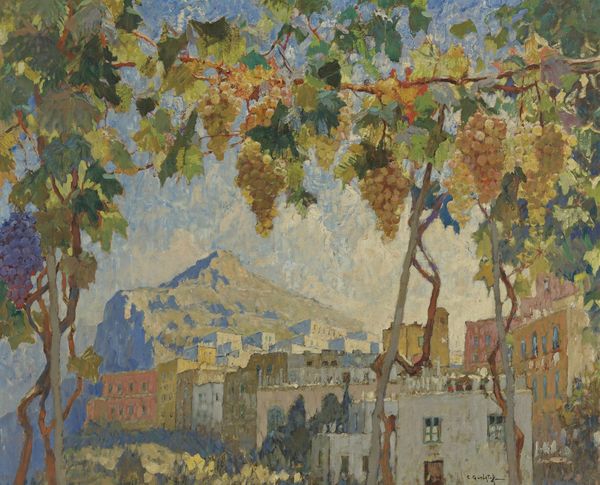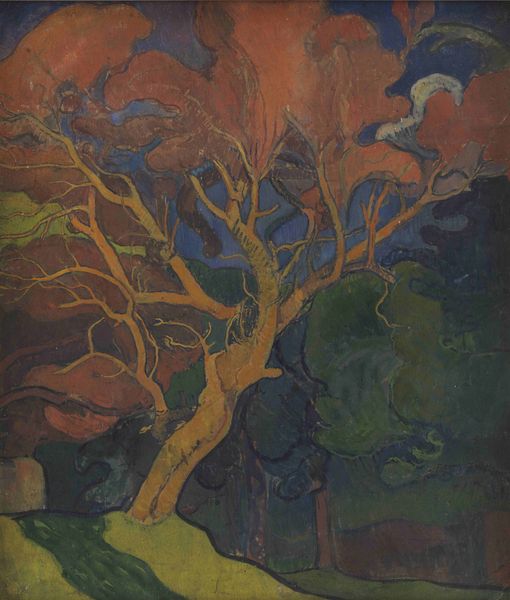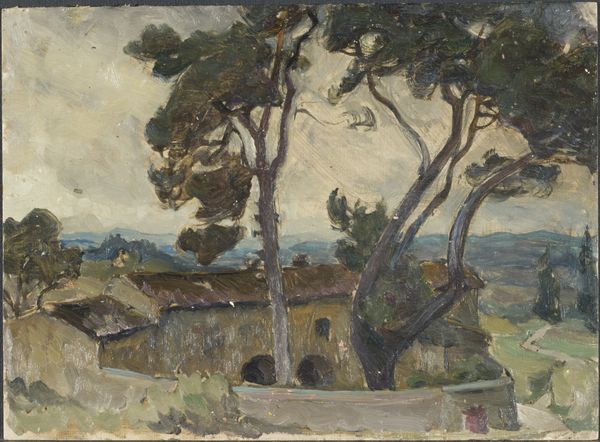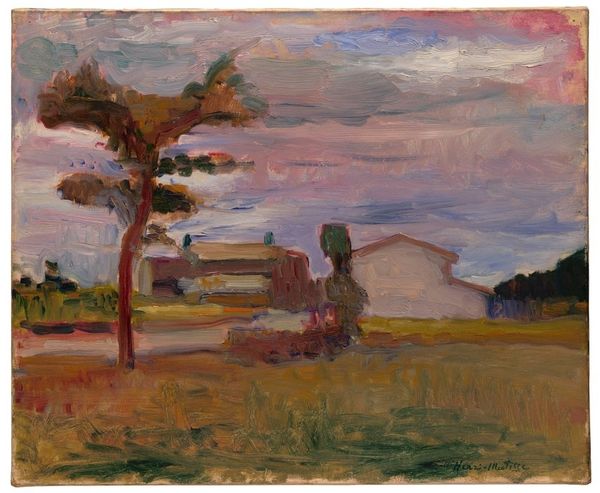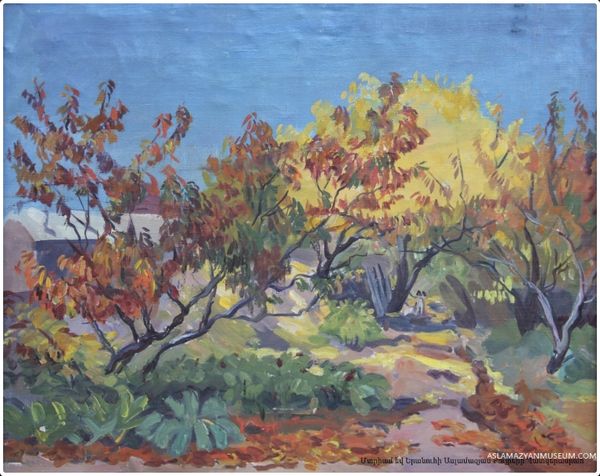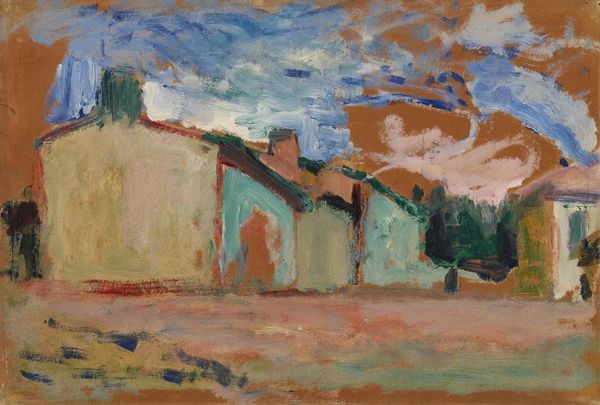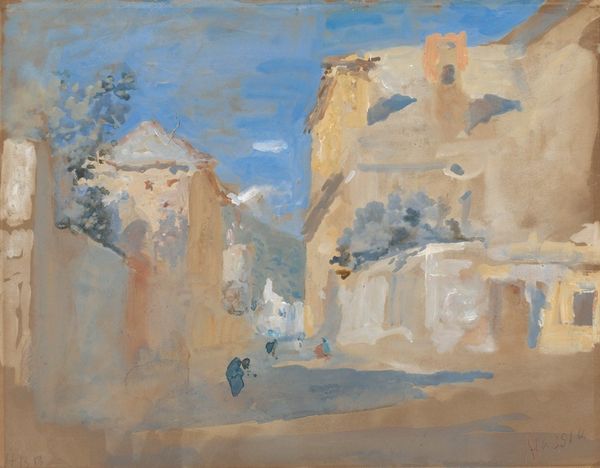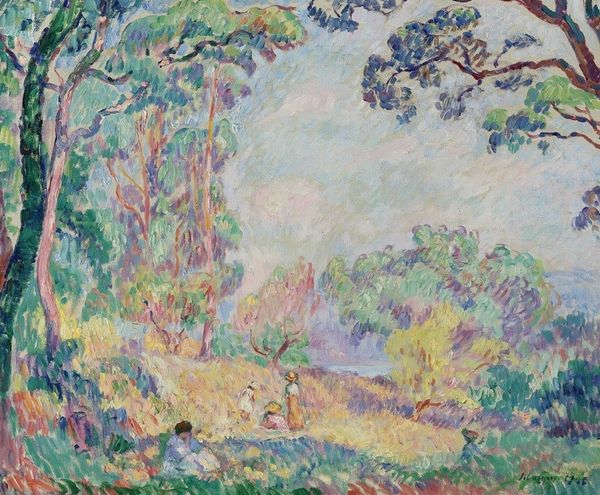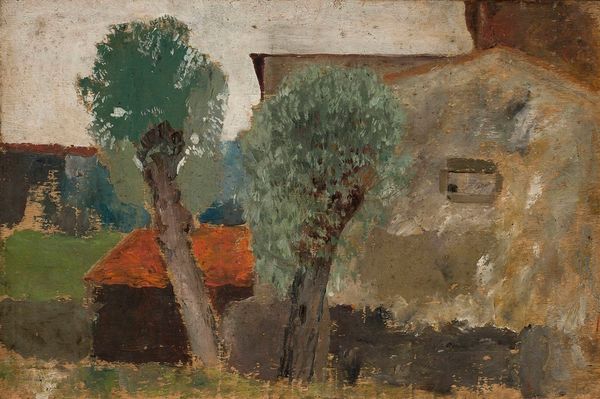
oil-paint
#
water colours
#
oil-paint
#
landscape
#
figuration
#
oil painting
#
genre-painting
#
realism
Dimensions: 82 x 61.5 cm
Copyright: Public domain
Editor: We're looking at "Vieja Estancia," painted by Pedro Figari in 1932. It’s an oil painting depicting a rural scene. I'm really struck by the dreamlike quality; it feels both familiar and distant. What draws your attention most in this work? Curator: Well, for me, Figari’s "Vieja Estancia" speaks volumes about the construction of national identity in Uruguay during the early 20th century. The gaucho culture, rural life, became potent symbols. Figari, coming from a privileged background, idealized this life through memory and simplified forms, which presents a rather romanticized view. Editor: So you’re saying there’s a deliberate idealization at play, maybe not a fully accurate representation? Curator: Exactly. He wasn't aiming for pure realism. Notice how the figures almost blend with the architecture, becoming part of the landscape. What does this merging convey about Figari’s perception of rural inhabitants? Editor: That perhaps he saw them as deeply connected to the land, an integral part of it rather than separate from it. Almost as if he wanted to create a narrative, but what about those water colours tags associated with the picture, does he uses the painting similarly than those mediums? Curator: In effect. Think of the rise of museums and the public display of such "national" imagery during that period. They serve to solidify a carefully constructed narrative for public consumption, often simplifying complex social realities. This approach does give the landscape in water colours texture effect on some points. What’s your sense of the relationship between art and the building of nationhood after examining this? Editor: I now understand how this seemingly simple landscape carries much broader cultural and even political significance. It's eye-opening to see art as more than just aesthetics. Curator: Indeed, it encourages us to think critically about whose stories are told and how, through visual culture. I will definitely keep that on mind when reviewing art, and appreciate the lessons behind.
Comments
No comments
Be the first to comment and join the conversation on the ultimate creative platform.

